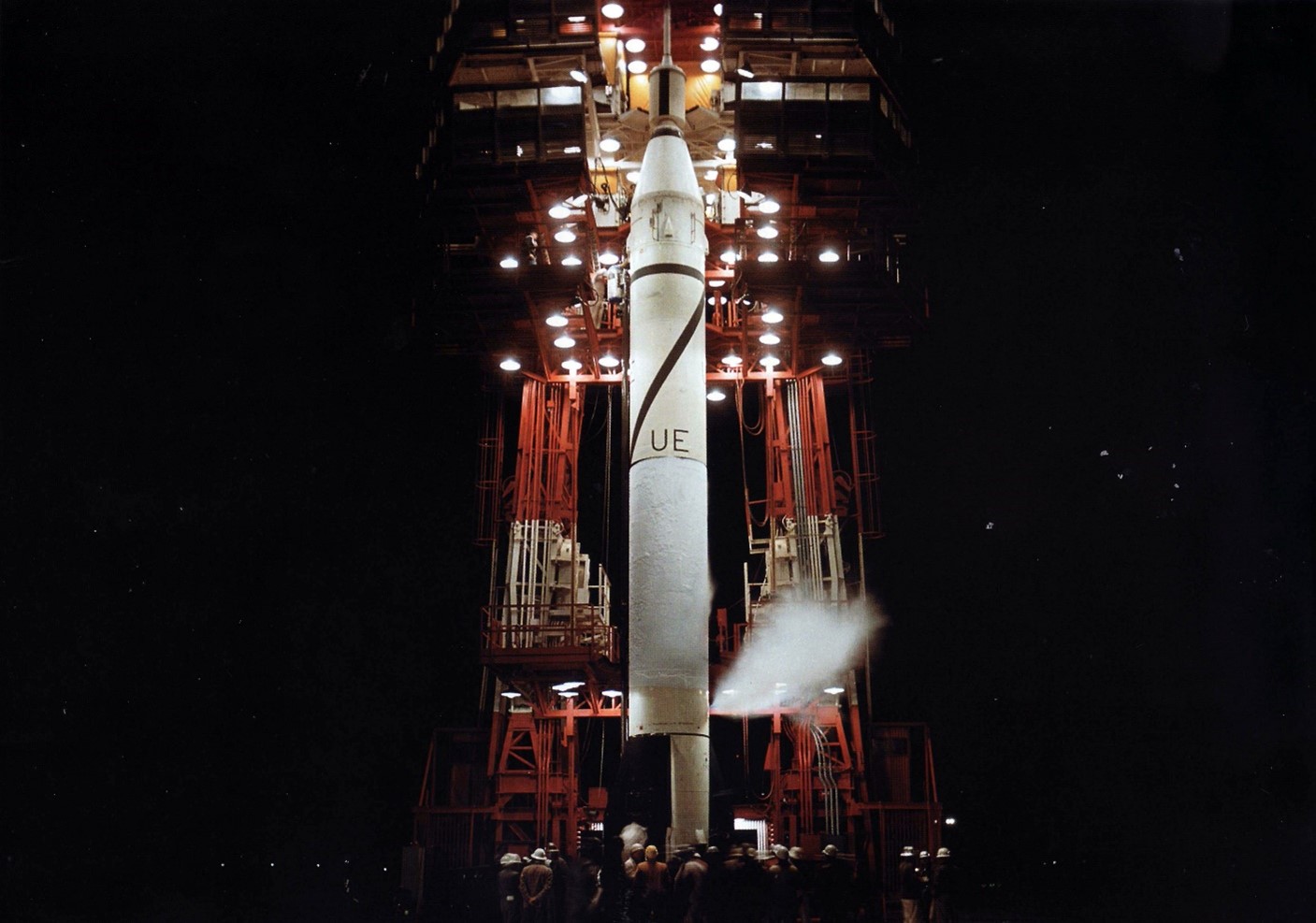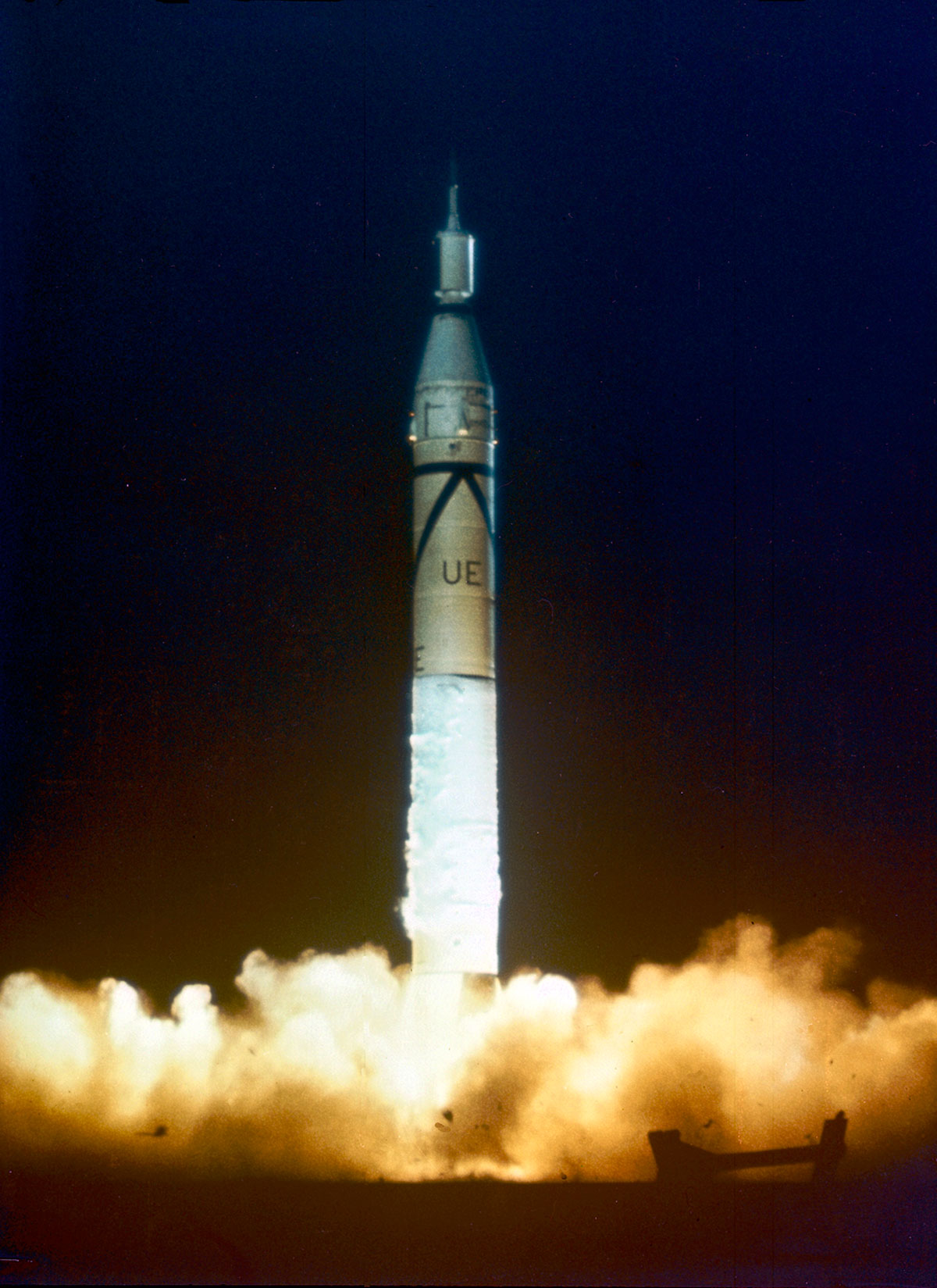JUNO I FACT SHEET
By Cliff Lethbridge

Juno I Explorer I On Launch Pad, Photo Courtesy U.S. Army
Classification: Space Launch Vehicle
Length: 68 feet, 7 inches
Diameter: 5 feet, 10 inches
Finspan: 13 feet
Date of First Cape Canaveral Launch: January 31, 1958
Date of Final Cape Canaveral Launch: October 22, 1958
Number of Cape Canaveral Launches: 6
Arguably one of the most significant space launch vehicles in the history of the U.S. space program, the Juno I was a modified Redstone MRBM designed specifically to carry lightweight payloads into low-Earth orbit. Although the Juno I was nearly identical to the Jupiter C research rocket from which it was adapted, the names Juno I and Jupiter C should not be interchanged, as is frequently the case. The Jupiter C, or Jupiter “Composite”, was used exclusively to perform re-entry tests of Jupiter IRBM nosecone technology. In this configuration, a powered fourth stage was not flown. Technically speaking, this made the Jupiter C a three-stage rocket. On the Juno I, an operational fourth stage was flown which remained attached to the satellite payload. Thus, Juno I is a name used to distinguish a vehicle used specifically to launch satellites.
Jupiter C had concluded its role in Jupiter component testing prior to the vehicle’s modification to satellite launcher. As a result, Jupiter C was officially renamed Juno at the request of Dr. William Pickering, head of the Jet Propulsion Laboratory, on November 18, 1957. In addition to distinguishing the rocket as a satellite launcher, the name Juno also served to divert attention away from the Jupiter IRBM program for which the Jupiter C was originally designed. The name Juno was later changed to Juno I to distinguish it from the Juno II. The Juno I was powered at liftoff by a single Rocketdyne engine capable of producing a thrust of 83,000 pounds. The engine burned liquid oxygen and Hydyne liquid fuel. Hydyne liquid fuel, a combination of 60% unsymmetrical dimethyl hydrazine (UDMH) and 40% diethylene-triamine, replaced alcohol previously used to power the Redstone first stage. This increased the first stage thrust by 8,000 pounds over the Jupiter C.
The Juno I second stage was a cluster of 11 Thiokol Baby Sergeant solid-fuel motors which produced a combined thrust of 16,500 pounds. The Juno I third stage was a cluster of three Thiokol Baby Sergeant solid-fuel motors producing a combined thrust of 5,400 pounds. One Thiokol Baby Sergeant solid-fuel motor, permanently attached to the satellite payload, made up the Juno I fourth stage. The fourth stage motor provided 1,800 pounds of thrust and accompanied the satellite payload into orbit. Each Baby Sergeant solid-fueled motor was 46 inches long by 6 inches wide. Each of the second and third stage Baby Sergeant motors burned 50 pounds of T17-E2 solid fuel. The fourth stage Baby Sergeant motor burned 50 pounds of JPL-532A solid fuel, a slightly more efficient fuel than that burned in the second and third stages. A distinctive rotating “tub” covered the clustered second and third stages, and was quite visible during liftoff and flight. It provided balance and stability to these stages during ascent.
Following launch, the first stage engine burned for about 155 seconds. After first stage burnout and separation, the clustered upper stages were allowed to coast to their highest altitude. Once the highest altitude was achieved, the upper stages were sequentially fired. The second stage was fired for about six seconds, followed by a two second pause to allow separation. The third stage was then fired for about six seconds, followed by a two second pause to allow separation. Finally, the fourth stage was fired for about six seconds to carry the attached satellite payload into orbit. Payloads carried by the Juno I typically weighed about 30 pounds.
Following scrubs on January 29 and January 30, a Juno I bearing the letters “UE” (Redstone #29; see Jupiter C) successfully launched Explorer I, the first U.S. satellite. The Juno I was launched from Cape Canaveral Launch Pad 26A at 10:48 p.m. EST on January 31, 1958. This was followed by five more Juno I satellite launch attempts. A Juno I bearing the letters “UV” (Redstone #26) was launched from Cape Canaveral Launch Pad 26A on March 5, 1958. The fourth stage failed to fire in this unsuccessful attempt to launch Explorer II. A Juno I bearing the letters “UT” (Redstone #24) was launched from Cape Canaveral Launch Pad 5 on March 26, 1958. This Juno I successfully carried Explorer III into orbit. A Juno I bearing the letters “TT” (Redstone #44) launched from Cape Canaveral Launch Pad 5 on July 26, 1958 successfully carried Explorer IV into orbit.
The last two Juno I launches were failures. A Juno I bearing the letters “TI” (Redstone #47) launched from Cape Canaveral Launch Pad 5 on August 24, 1958 failed to carry Explorer V into orbit when the Redstone booster bumped the upper stages, sending them out of control. Finally, a Juno I bearing the letters “HE” (Redstone #49 should have been lettered “TE” according to code, but “HE” was used instead) was launched from Cape Canaveral Launch Pad 5 on October 22, 1958. The upper stage clusters broke off in an unsuccessful attempt to deploy the Beacon I balloon-type satellite.

Juno I Explorer I Launch, Photo Courtesy U.S. Army


